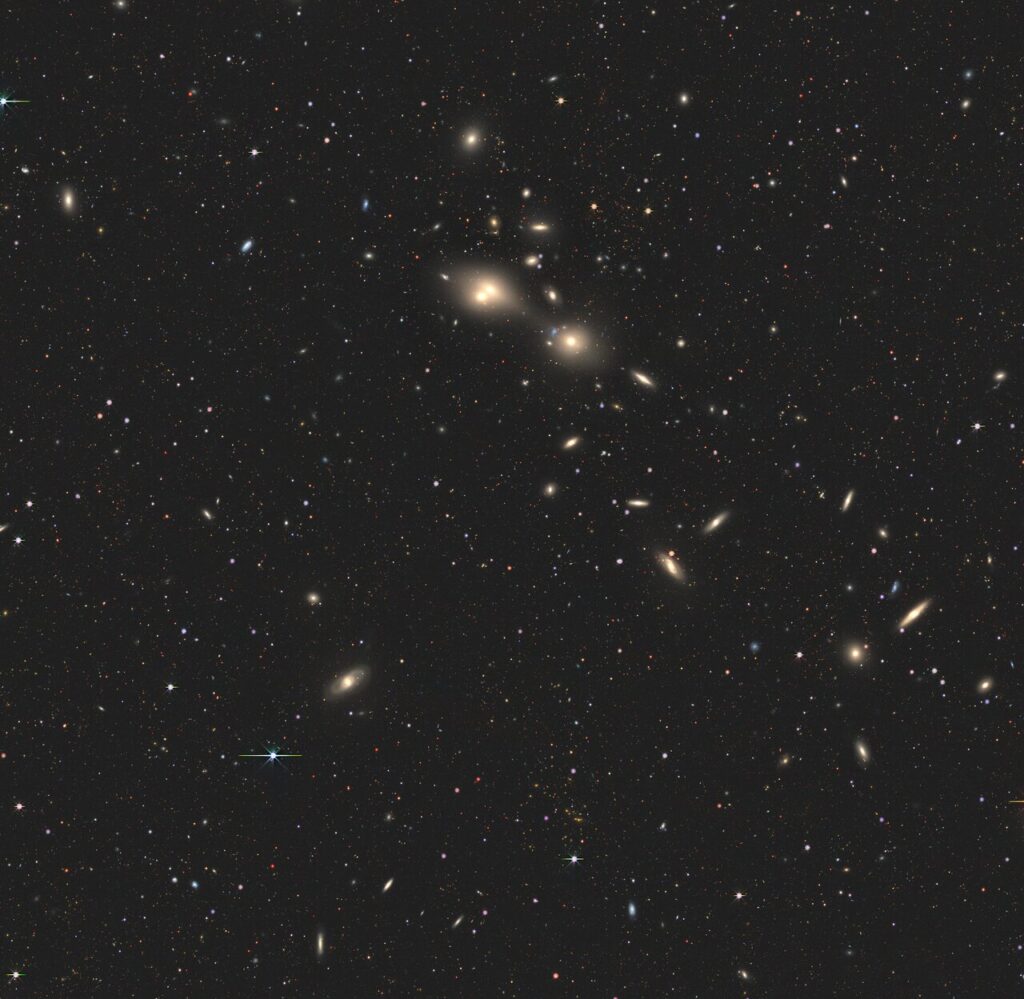Featured in this new image from the NASA/ESA/CSA James Webb Space Telescope is the dwarf galaxy NGC 4449. This galaxy, also known as Caldwell 21, resides roughly 12.5 million light-years away in the constellation Canes Venatici. NGC 4449 has been forming stars for several billion years, but it is currently experiencing a period of star formation at a much higher rate than in the past. Such unusually explosive and intense star formation activity is called a starburst and for that reason NGC 4449 is known as a starburst galaxy. Starbursts usually occur in the central regions of galaxies, but NGC 4449 displays more widespread star formation activity, and the very youngest stars are observed both in the nucleus and in streams surrounding the galaxy. It’s likely that the current widespread starburst was triggered by interaction or merging with a smaller companion; indeed, astronomers think NGC 4449’s star formation has been influenced by interactions with several of its neighbors.
Related posts
-

Scientists spot high-speed galaxy collision 11 billion light-years away: ‘We hence call this system the cosmic joust’
Using a telescope in Chile, astronomers have captured a high-speed collision between two galaxies located more... -

This Week In Space podcast: Episode 162 — Lunar Landing Day
Lunar Landing Day – When the Future Arrived – YouTube Watch On On Episode 162 of... -

YgiTK Northern Galaxy Lights star projector review
Star projectors have become a must-have gadget for a wide range of consumers, captivating everyone from...